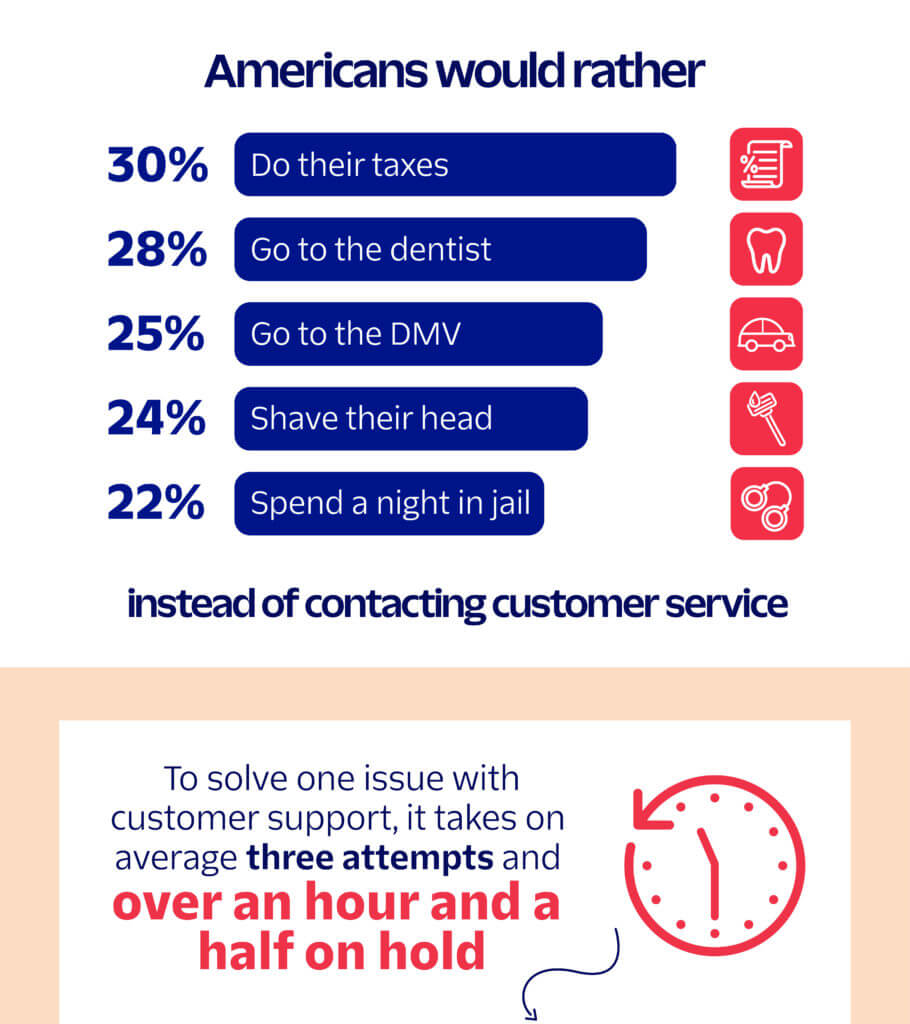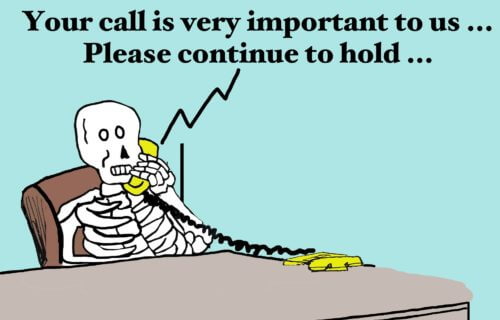NEW YORK — Calling a company to fix an issue with a product or service is a dreaded and frustrating process for most, if not all of us. The thought of being placed on hold for an hour and being redirected to agent after agent — and still not having the problem resolved — might lead you to not even bothering to try. Now, a new survey of 2,000 Americans reveals that 24 percent would opt to shave their head rather than speak with customer service — and that’s not the only extreme some respondents are willing to go to.
Instead of trying to resolve an issue, respondents would rather do their taxes (30%), go to the dentist (28%), or go to the DMV (25%). Twenty-two percent would even choose to spend a night in jail over dealing with a customer support representative.
Conducted by OnePoll on behalf of Twilio Flex, the survey looked at the effect customer service can have on Americans’ habits — then it also dug into the current pain points people experience, to see why they might go to such extremes to avoid resolving their issue.
According to the survey results, 62 percent of respondents have stopped using a company or service specifically because of a bad customer support experience. However, the opposite is true as well: 80 percent of respondents are more likely to be loyal to a company in the future if they have a positive experience with their support team.
2 in 3 don’t even bother calling customer service
Results found negative experiences, unfortunately, tend to be more prevalent. It takes an average of three attempts and more than an hour-and-a-half on hold in order to solve just one issue with customer support.
Respondents spend 42 minutes on hold each time they contact customer service, which they have to do about three times per issue. However, whenever someone finally speaks with a representative, their issue is resolved less than half the time — with an average success rate of only 46 percent.
Two-thirds (65%) of participants add it “doesn’t feel worth it” to get an issue resolved, due to the time and effort it takes.

Waiting on hold to resolve the issue can be even worse
When asked about specific pain points, needing to repeat details of an issue to a new representative after being transferred or disconnected (45%) is the most frustrating experience for respondents. Needing to contact a company multiple times to get an issue resolved (42%) and having only one option for a communication method (email or phone) to reach a customer support representative (40%) followed closely behind.
All the frustrations that come with contacting customer service might be why 66 percent hold off on reaching out. For those who delay contacting someone after an issue arises, the average respondent waits for a little over two weeks — or about 16 days.
This has caused Americans to get stuck in unwanted contracts because they miss the cancellation window (46%), miss the return window for products (44%), and even lose money on an item or service (41%).
“A major root cause of bad customer service is enabling technology that isn’t built to meet today’s customer expectations,” says Simonetta Turek, GM of Customer Experience Products, including Flex, Twilio’s contact center solution, in a statement. “Representatives aren’t equipped to deliver seamless and contextual experiences when they’re using outdated technology not designed foremost with the customer experience and customer journey in mind. This results in a poor experience for both the representatives and customers.”
What would help solve the common customer frustrations?
Respondents would like it if representatives had access to relevant information to better serve them, so they don’t have to repeat themselves if transferred (54%). In addition to that, people want to be able to solve their issue without speaking on the phone to a live person (52%) and have multiple ways to contact support to get their issue resolved (51%).
Results also found that — of those who currently delay reaching out to customer service — 84 percent would be less likely to do so if they had multiple ways to contact them.
“Customers expect a different experience from businesses — one that is personalized from the very first interaction, from the point of sale all the way to when they reach out for assistance,” Turek says.
“Businesses need to take advantage of the technology available to provide these end-to-end experiences. These include easy to implement omni-channel functionality, shared context across contact center representatives and other customer-facing personnel, such as retail floor associates, and providing personalized offers and relevant product or service information. Those that don’t adopt new channels and maximize the value of existing customer information will lose out on loyalty and ongoing business opportunities.”
